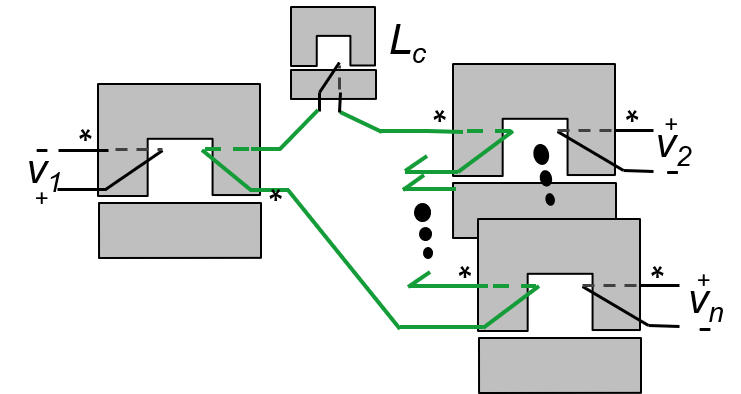LIBRARY
Multi-phase Coupled Inductor Analysis For Multi-phase Voltage Regulators

To solve this issue, an indirect-coupled inductor structure was proposed by CPES to achieve symmetrical coupling as shown in Fig. 1. Furthermore, a hybrid-coupled inductor structure was proposed by Google recently, shown in Fig. 2, which combines both benefits of traditional-coupled and indirect-coupled inductor structures. However, the detailed analysis of these two structures is lacking in the literature and the benefits and limitations are not clear. In this paper, these two structures are analyzed in detail. The equivalent circuits are derived and extended for general case regardless of phase number. Based on the derived equivalent circuit and flux distribution analysis in the inductors, it is found that due to symmetrical coupling, indirect-coupled inductor structure has better circuit performance than that of a traditional-coupled inductor when the phase number is large. However, its flux distribution is similar to that of non-coupled inductors and there is no dc flux cancellation effect. By combining magnetic coupling from a traditional- coupled inductor and indirect coupling from an indirect- coupled inductor, a hybrid-coupled inductor can achieve good circuit performance and dc flux cancellation at the same time. However, careful design is required for the trade-off between circuit performance and inductor size for a hybrid-coupled inductor.
In summary, indirect-coupled inductor and hybrid-coupled inductor structures are analyzed thoroughly in this paper. The benefits and limitations of these two structures are clearly identified, which provide the opportunity to give design guidelines and further improve these two structures.























































































